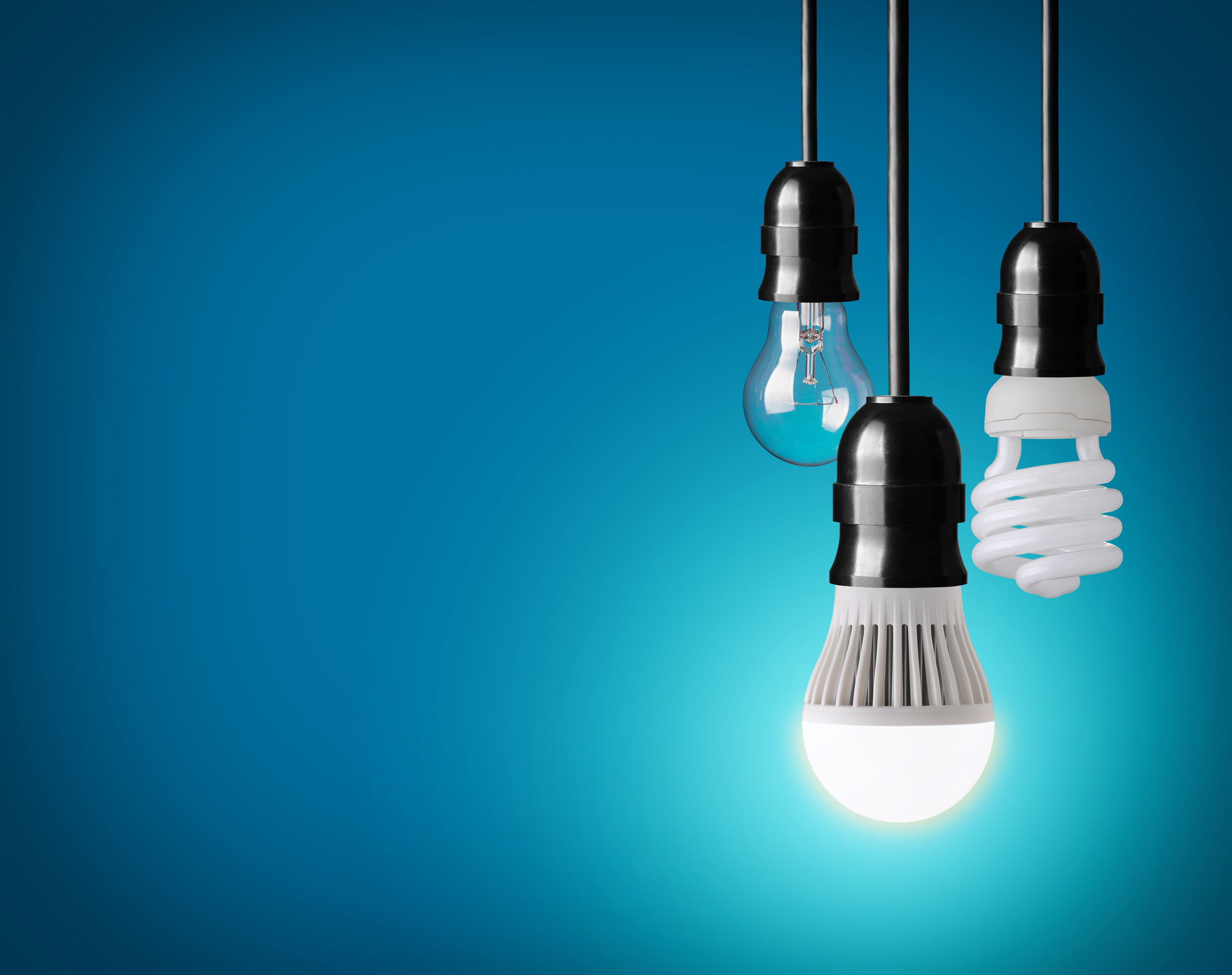
Old-fashioned filament bulbs are getting harder to find and halogen bulbs were banned by the European Union in 2018, so if your lights need replacing, what are your current options? Fluorescents and CFL bulbs (compact fluorescent lighting) are still on the market, but for businesses looking to upgrade their lighting system, the cost savings of commercial LED lighting can’t be ignored. In this blog, we’ll look at some of their many benefits.
LED bulbs last longer than any other bulb on the market, so when you switch to LED you can expect to spend less time and money replacing bulbs.
A typical LED bulb lasts for over 25,000 hours – to put that into perspective:
LED bulbs don’t emit the same amount of heat that other bulbs do, so they depreciate at a slower rate, and because they don’t have fragile parts, they are much more durable.
A lot of the electricity that goes into powering an incandescent bulb is wasted in lost heat, but because LED lights have better thermal management, they use 90% less energy – saving you money on your electric bills and reducing your carbon footprint.
Commercial LED lighting is cheaper to run and maintain, and it does all this without compromising on power. You can expect a typical 4W LED bulb to emit the same bright light as a 50W halogen bulb, but at a much cheaper rate.

LED bulbs use 90% less energy than their counterparts, which makes a big difference to the amount of electricity you need to power your lighting. Switching to LED will decrease your CO₂ emissions, which as we all know is a big priority for businesses.
If your business has a green mission with a target for reducing its environmental impact, then replacing your bulbs with LED lighting could play a significant role in this.
CFLs and fluorescents contain toxic heavy metals, like lead and mercury, which are damaging for the environment and have to be disposed of safely. LED bulbs don’t have these harmful elements, so they can be recycled with all your usual items.
Not only does this save money in paying for a specialist removal company to take away your broken and used bulbs but switching to LED also stops the harmful release of chemicals into the environment from outdated bulbs, like fluorescents.
LED bulbs are highly customisable, which gives businesses the opportunity to create something bespoke to suit their environment. Most LED bulbs are dimmable, and they’re available in a range of colour temperatures from warm candlelight to cool daylight.
In an office, you’d expect to see something bright with a natural feel to it, but this wouldn’t work in a more intimate setting like a restaurant. Commercial LED lighting is adaptable enough to suit these different types of businesses across industries.
LED bulbs are also highly directional, and combined with the right fixtures, it’s easy to spotlight certain areas. This is great for retail businesses, but it also helps prevent the glare on computer screens that can affect the well-being of office staff.
And because they don’t emit heat, these bulbs are safe to use around works of art, antiques, flowers, and temperature-sensitive food, like refrigerated items.

LED lights turn on instantly at the flick of a switch; there is no “warm up time”. What’s more, switching LED lights on and off has no effect on the bulb’s lifespan.
When they were first launched LED bulbs were considered more expensive than their counterparts, but in recent years they’ve dropped in price significantly. And because they have a longer replacement cycle, they work out cheaper over the long-term.
Many people assume that LED bulbs aren’t as bright as other types of lighting because they have a lower wattage. In this case, the wattage simply refers to the power going into the bulb – and as we know, LEDs require less power than incandescent bulbs.
At a glance the way commercial LED lighting is described can seem quite alien, but it’s not as difficult as it first appears – the most commonly used LED-jargon, includes:
When you’re buying LED bulbs you might also see ‘equivalent wattage’ referred to on the packaging. This describes how much power an incandescent bulb would need in order to emit the same amount of light – a 6W LED bulb is equivalent to a traditional 50W bulb. Remember, wattage refers to the power input not how bright the light is.
There’s no doubt that switching to an energy-efficient LED lighting system will save your business money and lower your carbon footprint. With help from the right installer, you can use these lights to create the perfect environment for your business.
The team at Emcal-Systems has years of experience working with organisations both big and small. If you’re considering switching to commercial LED lighting, contact us for help putting together a package that meets the needs of your business.